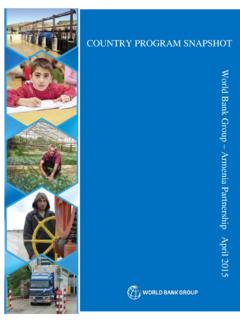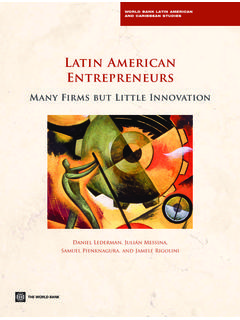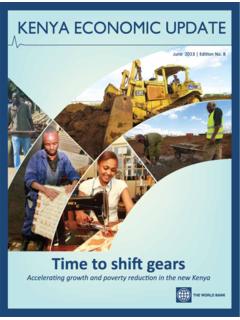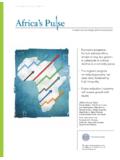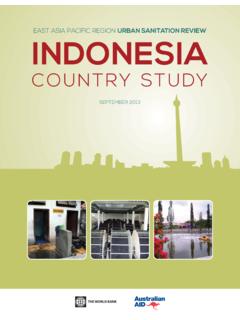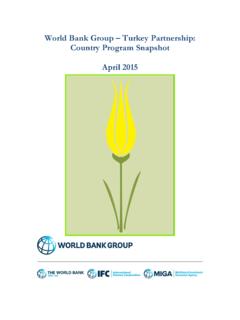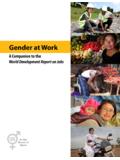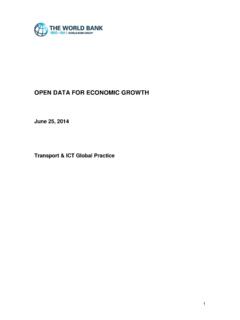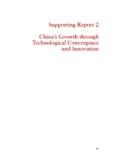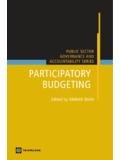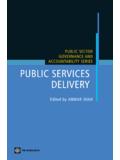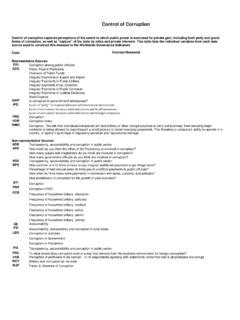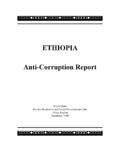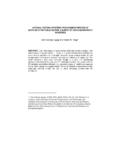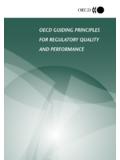Transcription of Partnership Program Snapshot April 2015 - World …
1 World Bank Group Kazakhstan Partnership Program Snapshot April 2015. RECENT ECONOMIC AND exchange rate, in the second half of 2014 the NBK. SECTORAL DEVELOPMENTS spent a record amount of its foreign exchange reserves (about US$14 billion, two-thirds of the total). Growth and External performance and tightened monetary policy by curbing tenge liquidity and allowing money market interest rates to Kazakhstan experienced slower growth and soar by end-2014 (they averaged 33 percent in higher inflation in 2014. Kazakhstan's real GDP December 2014). growth slowed from 6 percent in 2013 to percent Total Official International Reserves in 2014, due to weaker domestic demand.
2 This came 120. as a consequence of the devaluation of the local 100. currency in February 2014 and an oil price shock 80. US$ billion during the second half of the year, as well as weaker 60. external demand from China and Russia for 40. Kazakhstan's crude oil, iron ore, and metal products. 20. Private consumption, in particular, was hit hard by 0. the negative wealth effect after the devaluation, a Sep Dec Sep Dec Sep Dec Sep Dec Dec Mar Sep Jan Mar Mar Mar Mar Jun Jun Jun Jun Jun tightening of lending conditions for consumer loans, 2010 2011 2012 2013 2014 15. and the delayed impact of the slower growth in real FX monetary and gold reserves FX fiscal reserves wages in 2013.
3 Because of the devaluation, domestic inflation, as measured by the consumer price index Looking forward, as external uncertainties (CPI), increased gradually from percent year-on- heighten and domestic policies create demand year in January 2014 to percent in December, imbalances, Kazakhstan's economy will grow at due to higher imported input prices. During the a slower pace. In the medium term, the growth second half of 2014, oil prices fell considerably and outlook is dampened by weaker domestic demand, affected export and fiscal revenues as well as and consumer and investor sentiment have already business confidence to invest in the Kazakh started to deteriorate.
4 Expectations of weaker economy. external demand were maintained due to the anticipated slowdown in China and the recession in Real GDP Growth Composition by Expenditure Russia. Based on an oil price assumption of US$53. 10. per barrel, Kazakhstan's GDP growth is projected 8. to slow considerably from percent in 2014 to Percent/pecentage points Discrepancy 6 Investment percent in 2015. Lower oil export revenues are 4. Consumption expected to lead to deficits in both the current 2. Net exports account and the overall fiscal balance. 0. GDP growth -2. In the longer run, Kazakhstan's development -4. objective of joining the rank of the top 30 most -6.
5 2010 2011 2012 2013 2014 developed countries by 2050 will depend on its ability to sustain balanced and inclusive growth. The fall in oil prices affected the external trade Enhancing medium- to long-term development balance and put pressure on the exchange rate. prospects depends on Kazakhstan's success in As oil prices have softened considerably since June diversifying its endowments, namely, creating highly 2014, the trade balance surplus narrowed and led to skilled human capital, improving the quality of a deficit in the current account in the second half of physical capital, and more importantly, the year. Weaker demand from China and Russia has strengthening institutional capital all of the also contributed to the decrease in export revenues.
6 Necessary ingredients for the development and Despite the fall in oil prices, the National Bank of expansion of the private sector in the country. Kazakhstan (NBK) kept tight control on the exchange rate, holding the tenge-dollar rate fairly Fiscal Policy and Public Financial stable. This pushed up devaluation expectations, as Management was reflected in the high demand for foreign currency and a rise of dollarized deposits in the The authorities are applying a countercyclical banking system by year's end. To defend the pegged expansionary fiscal policy to support the 1. economy. Immediately after the tenge devaluation planning and results-based budgeting, and enhance and amid early indications of an economic the public audit function.
7 There are also plans to slowdown, the Government launched an economic improve the equity and neutrality of the tax system support Program for 2014 15 of 1 trillion tenge, and increase the efficiency of the use of transfers equivalent to US$ billion, used mainly to relieve from the Oil Fund. The subsequent phase will focus credit problems in the banking sector by addressing on expanded PPP implementation, the improved a long-standing issue with nonperforming loans efficiency of local governments, and the enhanced (NPLs) and providing subsidized loans to small- and functioning of the public audit system to improve medium-sized enterprises (SMEs).
8 With oil prices fiscal sustainability. sliding and external uncertainties heightening, the Government announced a supplemental five-year The Bank assists the public sector and PFM. economic support Program for 2015 19 centered reforms in Kazakhstan through a range of on a major stimulus package of about US$14 billion activities, including: the ongoing Customs to be used for developing transport and utility Modernization Project, the Tax Administration Reform infrastructure and building social housing and Project, the Statistical Capacity Building Project, and the schools. At the same time, the 2015 government recently launched Justice Sector Institutional budget was optimized and rebalanced by cutting Strengthening Project.
9 An additional Program is the nonproductive expenditures and scaling up those Joint Economic Research Program (JERP), which expenditures that stimulate growth, while protecting involves technical assistance for improving the basic previous social commitments from cuts. Assuming principles of results-based budgeting, reforming relatively stable external conditions, the fiscal selected tax areas and the integration of fiscal stimulus is expected to have a positive impact on agencies, strengthening the public debt management employment in the near term and on growth from system, improving the insolvency system, and 2016 onward. facilitating the Extractive Industries Transparency Initiative (EITI).
10 The Government has developed a new budget policy aiming to further strengthen the public Financial Sector performance financial management (PFM) system. Following President Nursultan Nazarbayev's address to the Kazakhstani banks benefit from the economic nation in December 2012, the Government support Program . In 2014, economic support went developed a concept on a new budget policy for mainly to the banking sector to relieve credit Kazakhstan aiming to enhance budget efficiency problems by addressing a long-standing issue with during 2014 17 (phase I) and improve fiscal NPLs and providing subsidized loans to SMEs. The sustainability during 2018 20 (phase II).
